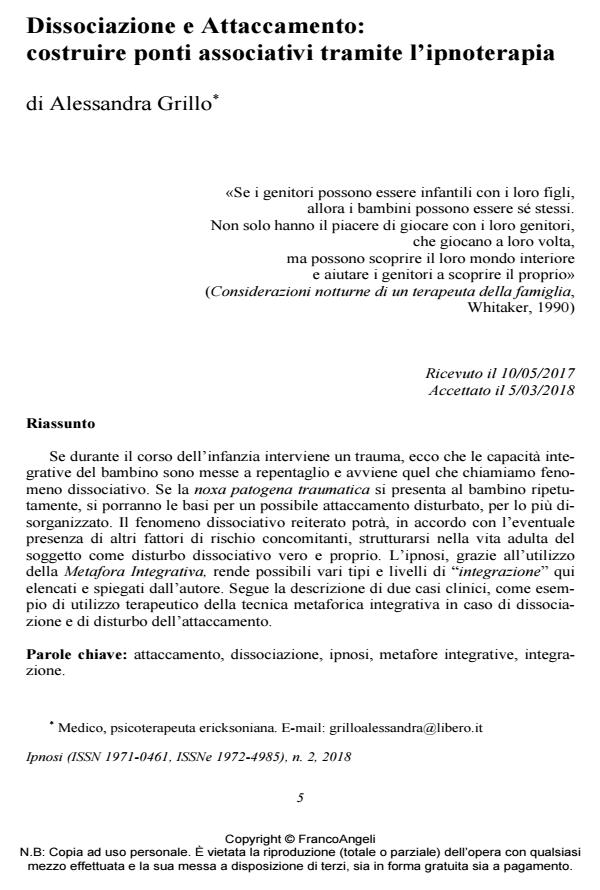Dissociation and Attachment: how to build associative bridges through hypnosis
Journal title IPNOSI
Author/s Alessandra Grillo
Publishing Year 2018 Issue 2018/2
Language Italian Pages 16 P. 5-20 File size 207 KB
DOI 10.3280/IPN2018-002001
DOI is like a bar code for intellectual property: to have more infomation
click here
Below, you can see the article first page
If you want to buy this article in PDF format, you can do it, following the instructions to buy download credits

FrancoAngeli is member of Publishers International Linking Association, Inc (PILA), a not-for-profit association which run the CrossRef service enabling links to and from online scholarly content.
If a trauma occurs during childhood, child’s integrative ability can be shattered and a dissociative phenomenon can be developed. When traumatic pathogenic noxae are repeated, children may develop a disturbed attachment, mostly disor-ganized. Repeated dissociative phenomenon could be structured in adulthood as dissociative disorder, when additional concurrent risk factors are present. Hypno-sis, can achieve various types and levels of "integration", through the use of Inte-grative Metaphors, as listed and explained by the author. In this article are shown two clinical cases as an example of therapeutic use of the integrative metaphor, in case of dissociation or attachment disorders.
Keywords: Attachment, dissociation, hypnosis, integrative metaphors, integration
Alessandra Grillo, Dissociazione e Attaccamento: costruire ponti associativi tramite l’ipnoterapia in "IPNOSI" 2/2018, pp 5-20, DOI: 10.3280/IPN2018-002001